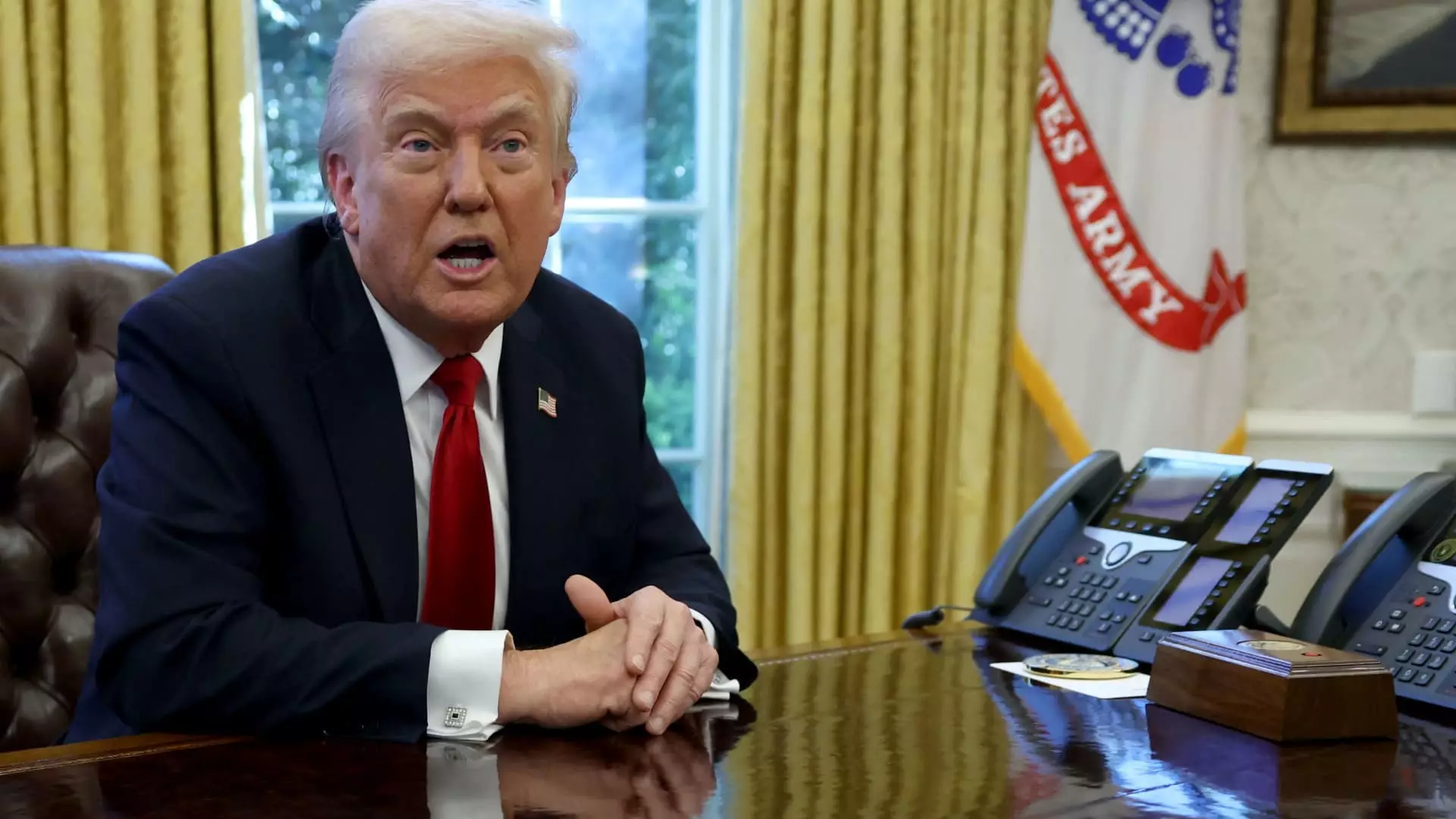In a bold move that has sent shockwaves through the automotive industry, President Donald Trump declared a hefty 25% tariff on all vehicles not produced in the United States. This announcement, aimed at protecting domestic manufacturers, raises profound questions about the administration’s vision for the future of American innovation. At the heart of this turmoil stands Elon Musk, the multifaceted CEO of Tesla, who, despite his close ties with Trump, finds himself caught amid the complexities of national policy and business strategy.
Historically, tariffs have sparked fierce debates—while proponents argue they safeguard local manufacturing jobs, critics contend they inflate consumer prices and stifle competition. In this instance, Musk’s dual role as a business leader and a senior advisor to Trump complicates the narrative. Undoubtedly, his relationships within the administration grant him influence, but they also place him in a precarious position. When Trump noted that Musk may have a “conflict,” it signals a potential fracture within the council of innovation. Should Musk advocate for the interests of Tesla, or does his loyalty to the larger vision of American automotive autonomy dictate his stance?
Constraining a Global Industry
Musk’s apparent silence on the tariffs, following Trump’s remarks, is telling. The fact remains that Tesla continues to rely heavily on a global supply chain to bring its electric vehicles to market. Musk’s earlier commendation of the folding in of domestic supply chains belies a significant challenge: critical components for the production of Tesla vehicles are often sourced from international suppliers. In a recent correspondence to the U.S. Trade Representative, Tesla noted the impracticality of achieving complete localization, indicating that the numerous parts essential for vehicle assembly come from varied sources, including Canada, Mexico, and China.
The importation of vital components such as body panels, headlamps, and electronic circuits underscores the tangled web of international trade that defines modern automotive manufacturing. By imposing broad tariffs, the administration risks strangling the lifeblood of innovative auto companies, stymying their production processes and ultimately harming consumers through increased prices. The suggestion that these tariffs could be “net neutral” for Tesla indicates a significant miscalculation, as it overlooks the nuanced balance of a complex industry that thrives on efficiencies gained through global cooperation.
The Fallout on Domestic Automakers
Interestingly, as Trump’s tariff declaration reverberated across financial markets, shares of automakers—domestic giants like General Motors and Ford, as well as Tesla—exhibited a slight decline. It is becoming increasingly apparent that, rather than serving as a boon for all U.S. companies, these tariffs may create a perverse incentive structure. In this newly defined landscape, domestic firms face stiff competition not only from imported vehicles but also from an array of emerging electric models, many of which boast lower production costs due to their access to global supply chains.
In this domain, competition is expected to escalate. Tesla’s foremost competitor, BYD, although currently barred from entering the U.S. market, is rapidly expanding in international territories. With increasing numbers of automakers set to release electric models, U.S. firms are wrestling not only with the burden of tariffs but also the pressure of advancing technology and shifting consumer preferences. The challenge becomes one of adaptation—how can these companies pivot to these shifts while grappling with government policies that may not align with their operational realities?
Charting a Path Forward Amidst Turbulence
The evolving situation poses a crucial dilemma for those within the automotive sector. The intersection of political favoritism and the burgeoning electric vehicle market creates a tension that could either fortify or fracture American automotive innovation. As the consequences of Trump’s tariff approach unfold, it invites a deeper analysis of how policy decisions are being shaped and, ultimately, who stands to gain or lose in the long run.
The relationship between government and industry—a delicate dance of encouragement and constraint—demands scrutiny. The ambitions that Trump holds for revitalizing American manufacturing must contend with the fundamental characteristics of a global economy. As stakeholders assess the implications of this latest policy shift, a crucial question arises: can local innovation truly thrive in an environment where interconnected global dynamics are so deeply woven into the fabric of production? The answers lie buried within the product of collaboration and competition, waiting to be unearthed in this rapidly evolving landscape.

